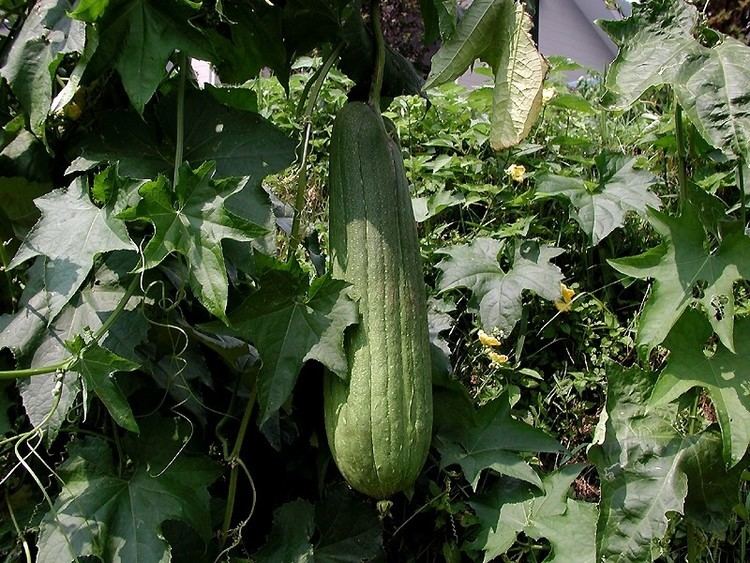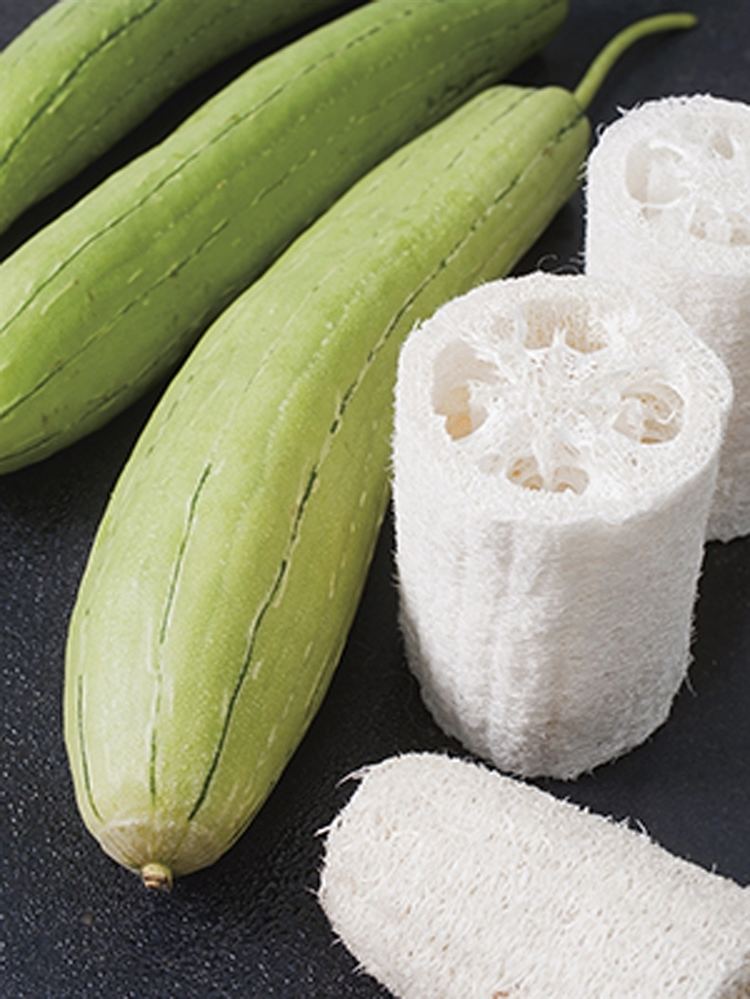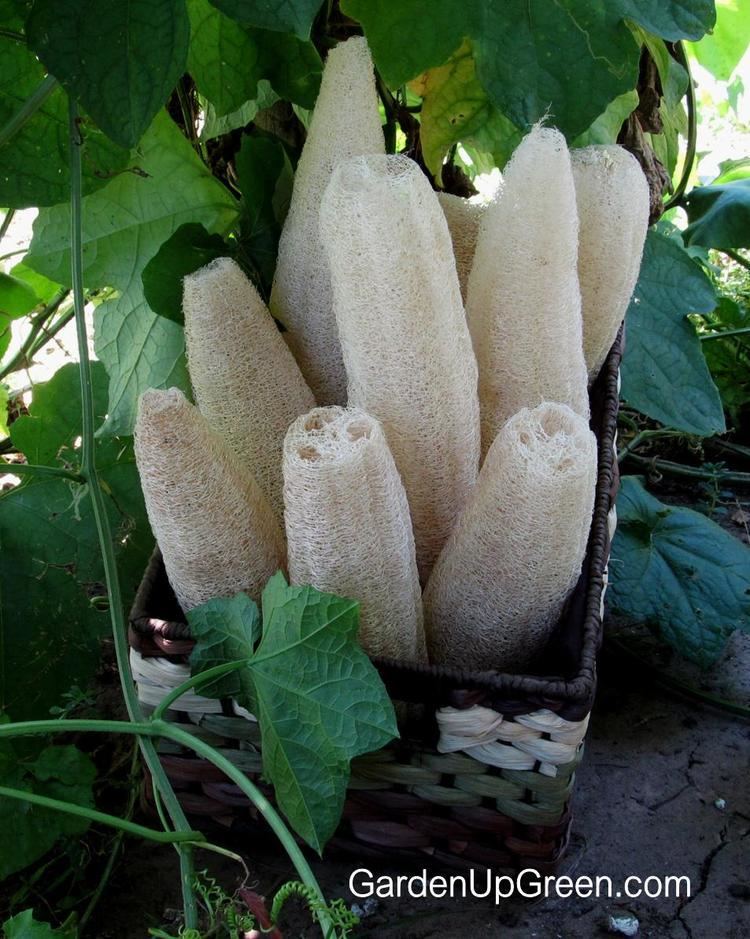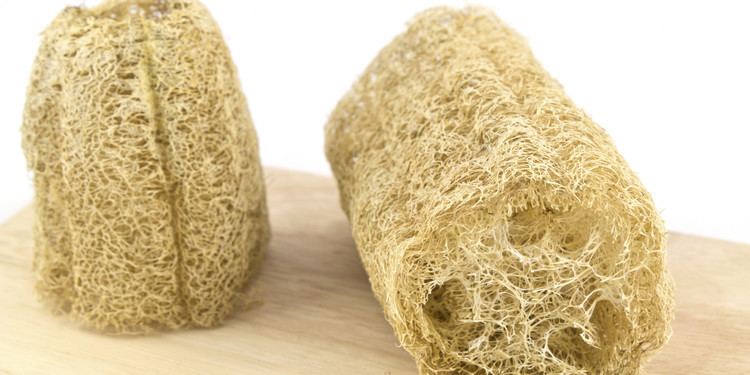Subtribe Luffinae Higher classification Luffinae | Tribe Benincaseae Scientific name Luffa Rank Genus | |
 | ||
Lower classifications Sponge gourd, Luffa acutangula, Luffa operculata Similar Calabash, Chayote, Luffa acutangula | ||
Luffa vegetable its health benefits
Luffa is a genus of tropical and subtropical vines in the cucumber (Cucurbitaceae) family.
Contents
In everyday non-technical usage, the luffa, also spelled loofah, usually means the fruit of the two species L. aegyptiaca and L. acutangula. The fruit of these species is cultivated and eaten as a vegetable. The fruit must be harvested at a young stage of development to be edible. The vegetable is popular in China and Vietnam. When the fruit is fully ripened, it is very fibrous. The fully developed fruit is the source of the loofah scrubbing sponge which is used in bathrooms and kitchens. Luffa are not frost-hardy, and require 150 to 200 warm days to mature.

The name luffa was taken by European botanists in the 17th century from the Egyptian Arabic name لوف lūf.

Growing luffa loofah as a vegetable
Fibers

The fruit section of L. aegyptiaca may be allowed to mature and used as a bath or kitchen sponge after being processed to remove everything but the network of xylem fibers. If the loofah is allowed to fully ripen and then dry out on the vine, the flesh disappears leaving only the fibrous skeleton and seeds, which can be easily shaken out. Marketed as luffa or loofah, the sponge is used as a body scrub.

In Paraguay, panels are made out of luffa combined with other vegetable matter and recycled plastic. These can be used to create furniture and construct houses.
Food
Luffa are best eaten when small (less than 12 cm in length) and still green.
In Vietnam, the gourd is called "mướp hương" and is a common ingredient in soups and stir-fried dishes.

In Tamil Nadu, the gourd is called Peerkangai and used as a vegetable to make Peerkangai kootu, poriyal, thogayal. Even the skin is used to make chutney.

In Karnataka's Malenadu (Western Ghats) it is known as tuppadahirekayi, which literally translates as "buttersquash". It grows naturally in this region and is consumed when it is still tender and green. It is used as a vegetable in curries, but also as a snack, bhajji, dipped in chickpea batter and deep fried. Once the fruit dries out, it is used as a natural scrubber and washing sponge.
In Andhra Pradesh, it is called nethi beerakaya. And in Assam it is called zika (জিকা, Luffa acutangula) and bhûl (ভোল, Luffa aegyptica). It is used as a vegetable in a curry, chutney and stir fry.
In Kerala, it is called peechinga In Palakkad area it is particularly called poththanga and used in bath. It is used as a vegetable, cooked with dal or stir fried. Fully matured fruit is used as a natural scrub in rural Kerala. In some places like Wayanad, it grows as a creeper on fences.
In Maharashtra, India, dodka (ridge gourd luffa) and ghosavala (smooth luffa) are common vegetables prepared with either crushed dried peanuts or with beans.
In Manipur, India, Sebot is cooked with other ingredients like potato, dried fish, fermented fish and served. It is also steamed and consumed or crushed (Ironba) with other ingredients and served with steamed rice (Chaak). Fried ones (Kaanghou) are also favorites for many.
In Japan, it is called Hechima (へちま) and has been cultivated all over the country during summer. It is commonly used as a green vegetable in the traditional dishes of Nansei Islands and Kyushu while the other regions of Japan have been growing it predominantly to make sponge, soap, shampoo and lotion. Together with bitter melon, it is also a popular plant to grow outside of a building window during summer, in order to create natural shades to block out the direct sunlight and reduces the amount of heat radiating into a building.
In China, Indonesia (where it is called Sigua or oyong), the Philippines (where it is called patola) and Manipur, India, (where it is called sebot) the luffa is eaten as a green vegetable in various dishes. It is also known as "Chinese okra" in Canada. In Spanish, it is called an estropajo.
In Korea (where it is called Susemi), this plant is used for washing dishes (loffah) and in Korean cuisine.
Luffa species are used as food plants by the larvae of some Lepidoptera species, including Hypercompe albicornis. In Myanmar, (where it is called tha-boot-thee သပြတ္သီး) probably derived from the word sebot in Manipur. When it is young used as food and when it is mature and dry, cleared of all seeds and used as sponge for cleaning purposes. It is also widely used in steaming glutinous rice instead of cloth.
